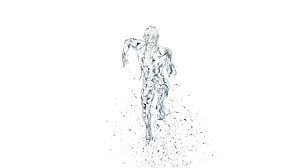 What do you do when you find yourself at a crossroad? When your current life no longer ‘fits’, yet your next steps are unclear? When you’re ready for a new chapter to begin, but you don’t know how to initiate change?
What do you do when you find yourself at a crossroad? When your current life no longer ‘fits’, yet your next steps are unclear? When you’re ready for a new chapter to begin, but you don’t know how to initiate change?
Regardless of what’s brought you to the crossroad, taking time to reconnect with your values, your curiosities and instincts can help you move forward with greater ease and success.
Many of us approach transition from an analytical mindset. We ask ourselves questions such as: What do I want to do with my time? How can I earn a living? What steps do I need to take to maintain or regain balance in my life? Analyzing your next steps by reflecting on what you currently know and believe is important during transition; however, kernels of personal wisdom to inform your process are available if you take time to connect with yourself on a deeper level.
Through reconnecting with your self, you’ll be able to tap into your creativity and intuition; tools that will help you discover new pathways for your life. At the same time, it will help you build a reservoir of emotional energy, which is critical for launching a new trajectory. How many times have said to yourself, “I’d make a change if only I had the energy?”
So how do we foster this deep reconnection, especially when our lives are busy or when we’re healing from a difficult episode? Here are a few strategies for self-connection that will reenergize you while revealing opportunities and guiding your choices.
-
- Revisit what you once loved. What brought you joy as a child? What stirred wonder in your soul? What had you flying out of bed on a Saturday morning brimming with anticipation? Reflecting on experiences that once fully engaged you shed light on what you might want to reintroduce into your life. What experiences brought you joy that you’d like to tap back into?
- Sing and dance. You might feel that you’re too old to sing and dance. Maybe you’re tone deaf or move as if you have two left feet. It doesn’t matter. Music and movement help us get out of our heads, if only temporarily, and allow us to experience different senses. When analysis paralysis strikes, or when you get on the gerbil wheel of your own thoughts, breaking these patterns through kinesthetic experiences of singing and dancing creates opportunities for new insights to emerge. And research confirms that singing and dancing release endorphins that provide a calming, yet energizing effect, while increasing the neuroplasticity in your brain. Reconnecting to these primal activities improves your health and helps you navigate the stress that can accompany life transitions (https://www.ncbi.nlm.nih.gov/pubmed/23089077). How can you reconnect with music and movement?
- Make a weekly date with yourself. In Julia Cameron’s book, The Artist Way, she encourages artists to go on a weekly date by themselves to explore something that makes them curious. It could be an outing with an old camera, a trip to wander the aisles of a hard ware or fabric store, or a hike in the woods. The only rules: go alone, make it a weekly ritual, and explore what strikes you. This sage advice transfers wonderfully to women in transition. Remember, you are born with a creative capacity. Taking weekly dates with yourself allows you to access your creative side, which can then help you identify new possibilities for your next life chapter. What will you do on a date with yourself this week?
- Act on your intuition. We often hope for a ‘sign’ to guide our next steps; a signal to tell us whether to take a new job, move to a new city, or leave a relationship. Yes – intuition can guide you well in these big life moments. However, if you’re not used to listening deeply to yourself, it can be hard to access. You can help yourself by building your intuition muscle. How often do you get a hunch to call a friend out of the blue? To tell someone what they mean to you? To slow down when you’re driving? It’s common for us to have intuitive hits that we ignore. And often, it’s only later or after the fact that we reconnect with our hunches and recognize that our intuition was prompting us to action. So make an effort to listen to yourself daily when you get a hunch to reach out to someone, to clean out that closet, or read a certain article. Then act on it. You’ll be developing your ability to perceive and intuit situations on a deeper level, honing a capacity that will help you effectively navigate your crossroad. What hunches have called you to action recently?
- Designate time for reconnection. Only you can ensure you have time for reconnecting with yourself. No one will give it to you. Schedule it on your calendar. Institute a $50 cancellation fee if that helps. Your time is as worthy as your dentist’s. You don’t have to schedule hours on end. It can be shorter segments, but ones that allow for unbroken focus on an activity that fosters reconnection. Brigid Schulte, author of Overwhelmed, writes about women’s greatest enemy – a lack of time to herself. This lack of time impacts our creativity and our ability to give voice to the ideas we have for our lives. So choose what time you’re willing to dedicate for reconnection and make it a priority. Committing to yourself in practice will in turn feed your energy. When will regular time for reconnection be scheduled on your calendar?

Making an effort to connect to what you know, believe, sense and perceive will give you clarity and inspiration. You might be surprised at how energizing this process can be, and the fuel it provides for moving forward.
 Before entering the field of professional and organizational development, I was a choreographer and professional dancer. During these years I spent hours everyday standing at a ballet barre executing a series of exercises strategically designed to hone balance, agility, strength and endurance.
Before entering the field of professional and organizational development, I was a choreographer and professional dancer. During these years I spent hours everyday standing at a ballet barre executing a series of exercises strategically designed to hone balance, agility, strength and endurance.
 Engaging in deep focus and reflection isn’t always easy. It requires energy and commitment. In a study by the National Institute of Health, researchers scanned the brains of over 50 executives as they engaged in deep-level exploratory thinking. This deep-level thinking activated the participants’ executive centers in the brain – the region responsible for controlling attention and one that requires intentional focus. When participants engaged in surface-oriented thinking, the brain region that processes anticipation and reward was activated. This region is known as the pleasure pathway or reward center and explains why we often prefer answering easy emails over writing that complicated report. The science confirms that thinking deeply involves effort and focused attention. However, attuning ourselves in this manner brings a wealth of information regarding our physiological responses, energy, moods, curiosities, and inner knowledge. It fuels an awareness that serves as an internal compass, calibrated to our unique make-up that can guide us through transition.
Engaging in deep focus and reflection isn’t always easy. It requires energy and commitment. In a study by the National Institute of Health, researchers scanned the brains of over 50 executives as they engaged in deep-level exploratory thinking. This deep-level thinking activated the participants’ executive centers in the brain – the region responsible for controlling attention and one that requires intentional focus. When participants engaged in surface-oriented thinking, the brain region that processes anticipation and reward was activated. This region is known as the pleasure pathway or reward center and explains why we often prefer answering easy emails over writing that complicated report. The science confirms that thinking deeply involves effort and focused attention. However, attuning ourselves in this manner brings a wealth of information regarding our physiological responses, energy, moods, curiosities, and inner knowledge. It fuels an awareness that serves as an internal compass, calibrated to our unique make-up that can guide us through transition.

 Retreating – whether through a ten minute morning ritual, a three-hour workshop, or a multi-day adventure – provides a place of calm in the midst of the daily fray. It’s an opportunity to step back and assess what’s in front of you. Just like an American football quarter back receives the ball and retreats several steps behind the line of scrimmage to assess options for advancing the ball forward, so too can you step back to get a better perspective of what options lay ahead.
Retreating – whether through a ten minute morning ritual, a three-hour workshop, or a multi-day adventure – provides a place of calm in the midst of the daily fray. It’s an opportunity to step back and assess what’s in front of you. Just like an American football quarter back receives the ball and retreats several steps behind the line of scrimmage to assess options for advancing the ball forward, so too can you step back to get a better perspective of what options lay ahead. The process of reinvention differentiates a simple situational change from a deeper level transition. Whether it’s a new mindset, a perspective, or belief about yourself, reinvention on a psychological level is at the heart of transforming who you are. However, new mindsets, perspectives, and beliefs are often reflected externally and may manifest in how you dress and express yourself in the external world.
The process of reinvention differentiates a simple situational change from a deeper level transition. Whether it’s a new mindset, a perspective, or belief about yourself, reinvention on a psychological level is at the heart of transforming who you are. However, new mindsets, perspectives, and beliefs are often reflected externally and may manifest in how you dress and express yourself in the external world. Launching life in a different direction with a new sense of self takes effort, and sustaining a new trajectory requires significant energy. A critical, and often overlooked component of transition is this element of managing your energy.
Launching life in a different direction with a new sense of self takes effort, and sustaining a new trajectory requires significant energy. A critical, and often overlooked component of transition is this element of managing your energy.
 Although I was quite young and the experience not earth shattering, it did introduce me to the dynamic cycle of transition and transformation. Once a linear thinker and passionate about numbers and the concrete world, I became eager to embrace ambiguity. The mysteries of life that evaded equations and analysis suddenly inspired me to create art and explore life from a new perspective. My career choice and my life story shifted as a result.
Although I was quite young and the experience not earth shattering, it did introduce me to the dynamic cycle of transition and transformation. Once a linear thinker and passionate about numbers and the concrete world, I became eager to embrace ambiguity. The mysteries of life that evaded equations and analysis suddenly inspired me to create art and explore life from a new perspective. My career choice and my life story shifted as a result.